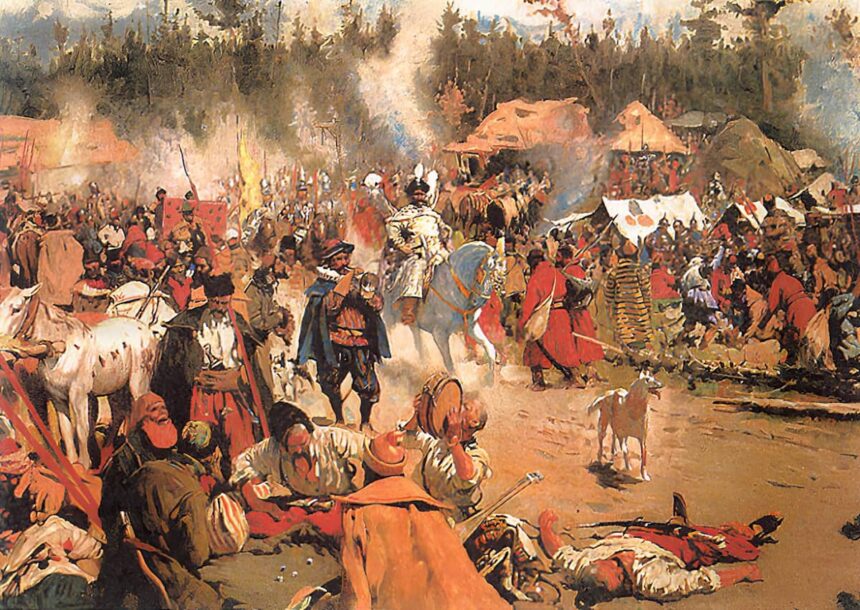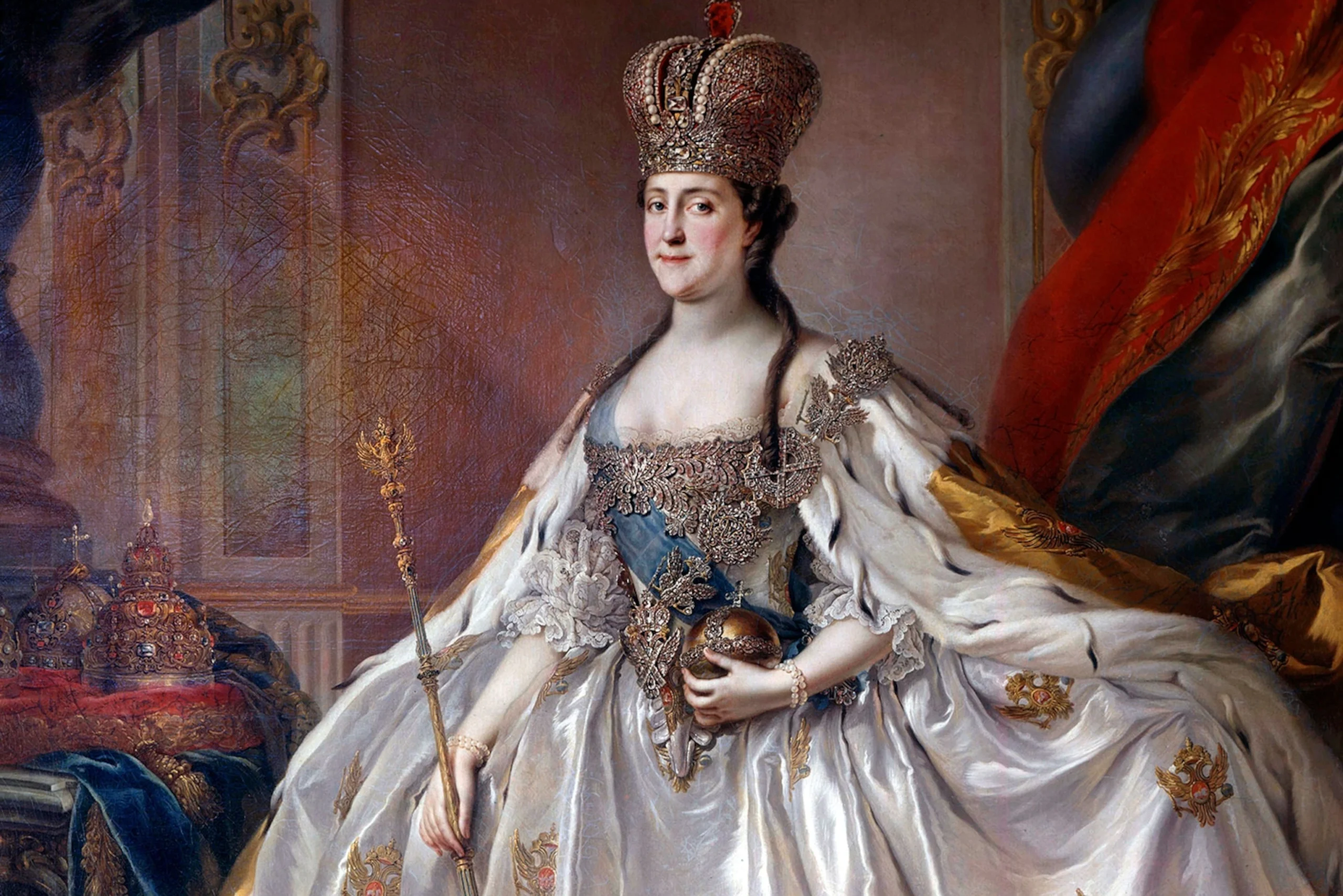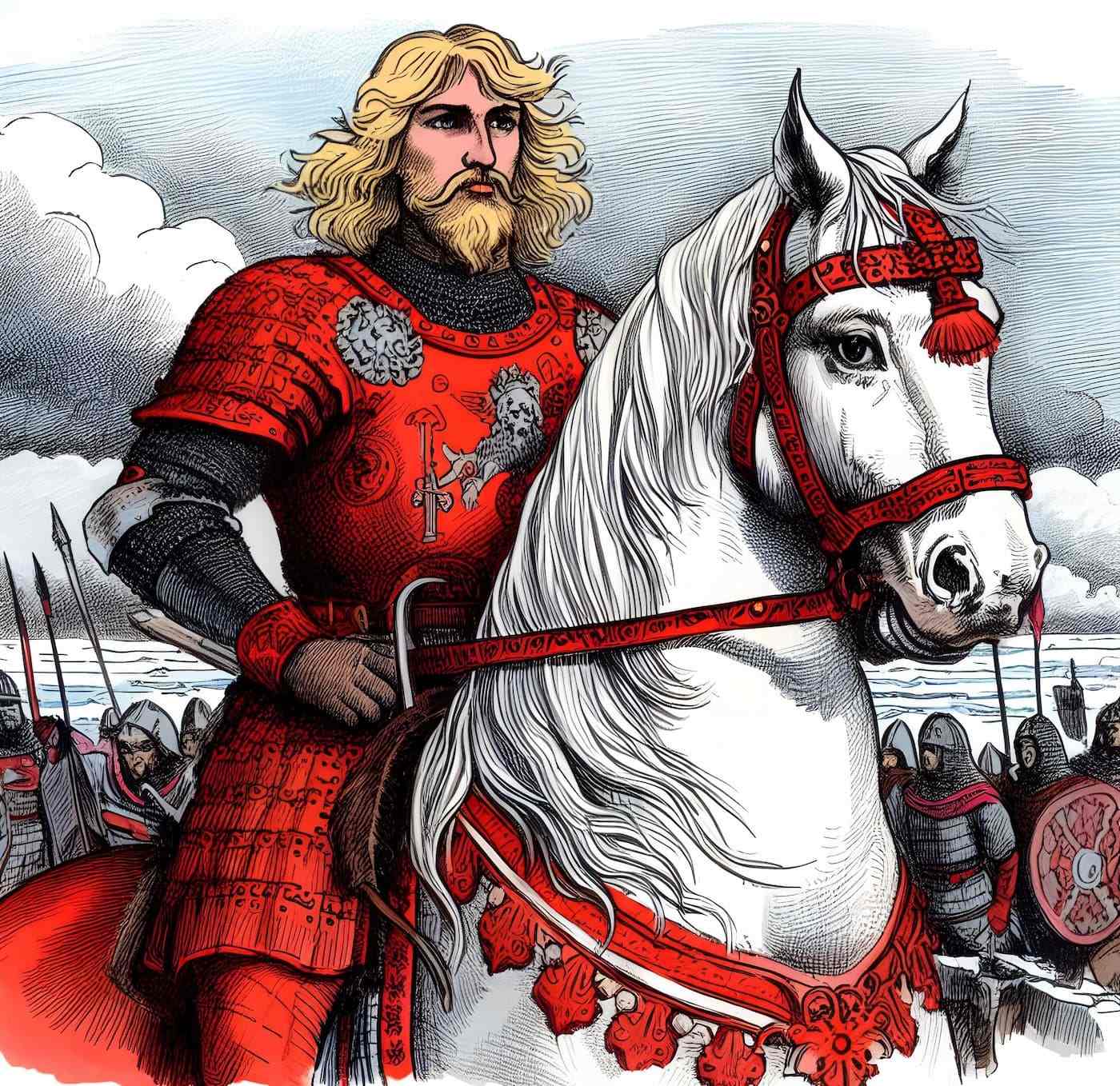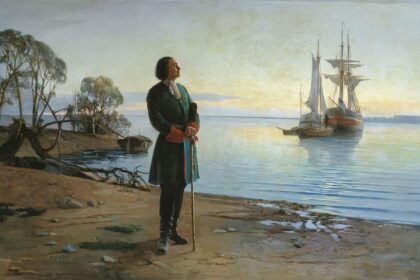What Is the Time of Troubles?
Even contemporaries of the early 17th-century events referred to them as the “Time of Troubles.” The word “troubled” (смутный) in pre-Petrine Russia had, as it does now, negative connotations: anxious, chaotic, full of discord, turbulent, and so on. It very accurately describes this period: a time of deep crisis in both governmental institutions and Russian statehood. Russia experienced a Polish military intervention, and the first civil war began.
- What Is the Time of Troubles?
- Is Ivan the Terrible to Blame for Everything?
- Was Tsarevich Dmitry Really Murdered?
- So, Was Boris Godunov a Villain, or Is He Being Demonized?
- Who Were the False Dmitrys, How Many Were There, and Why Did People Believe in Them?
- Who Was Marina Mnishek? Was She Truly a “Gray Cardinal” Behind the False Dmitrys?
- What Was the Involvement of the Poles in the Time of Troubles, and How Did They End Up in Russia?
- Did Minin and Pozharsky Really Do Something Important?
- Who Was Ivan Susanin, and Is It True That He Gave His Life for the Tsar?
- How Did the Time of Troubles End?
This period can be compared to the beginning of the 20th century: it is no coincidence that General Anton Ivanovich Denikin, a contemporary of the October Revolution and the Civil War of 1917–1922, titled his memoirs written in exile “Essays on the Russian Troubles.”
Later in Russia, other political upheavals of the “rebellious” 17th century were also called “times of troubles.” Unlike the preceding and following centuries, the 17th century was full of political upheavals—not only the Troubles and the Razin rebellion but also numerous urban uprisings, streltsy (musketeer) revolts, and so on.
However, in historical memory, the term “Time of Troubles” or simply “Troubles” (with a capital “T”) became associated with the period from 1605 to 1612—from the accession of False Dmitry I to the surrender of the Polish garrison in the Kremlin. Nevertheless, it is difficult to pinpoint the exact beginning and end of the Time of Troubles, so other chronological boundaries are also legitimate.
Is Ivan the Terrible to Blame for Everything?
Reducing the causes of the Troubles to the personality of Ivan the Terrible alone is unjust, as various factors provoked it. However, it cannot be denied that many of these factors resulted from his reign.
It is not by chance that Russian writings often begin the narrative of the Time of Troubles with the death of Ivan the Terrible, even though he died much earlier, in 1584.
Ivan IV spent considerable effort creating Russian autocracy, characterized by the sole and unlimited power of the monarch. The results of his nearly half-century reign included both obviously positive innovations and negative consequences. Notably, there was no clear mechanism for transferring state power if the dynasty ended.
Ivan died, passing the throne to his son, Fyodor Ivanovich, a man openly incapable; it was already clear during his father’s life that he was unlikely to leave offspring. One of the key causes of the Time of Troubles was the dynastic crisis following the death in 1598 of Tsar Fyodor, the last of the Rurikids, and it was quite predictable. Nevertheless, as far as is known, Ivan left no instructions in case of such a development.
Furthermore, many of Ivan IV’s domestic and foreign policy decisions severely damaged Russia’s economy. Primarily, this concerns the Oprichnina and the Livonian War, the longest in the country’s history (it lasted 25 years). The consequences of the Oprichnina’s violent land redistribution, accompanied by numerous crimes and bloody excesses, and the exhausting war with significant economic and human losses, which ultimately yielded no positive results, affected Russia for many years after the Tsar’s death.
Was Tsarevich Dmitry Really Murdered?
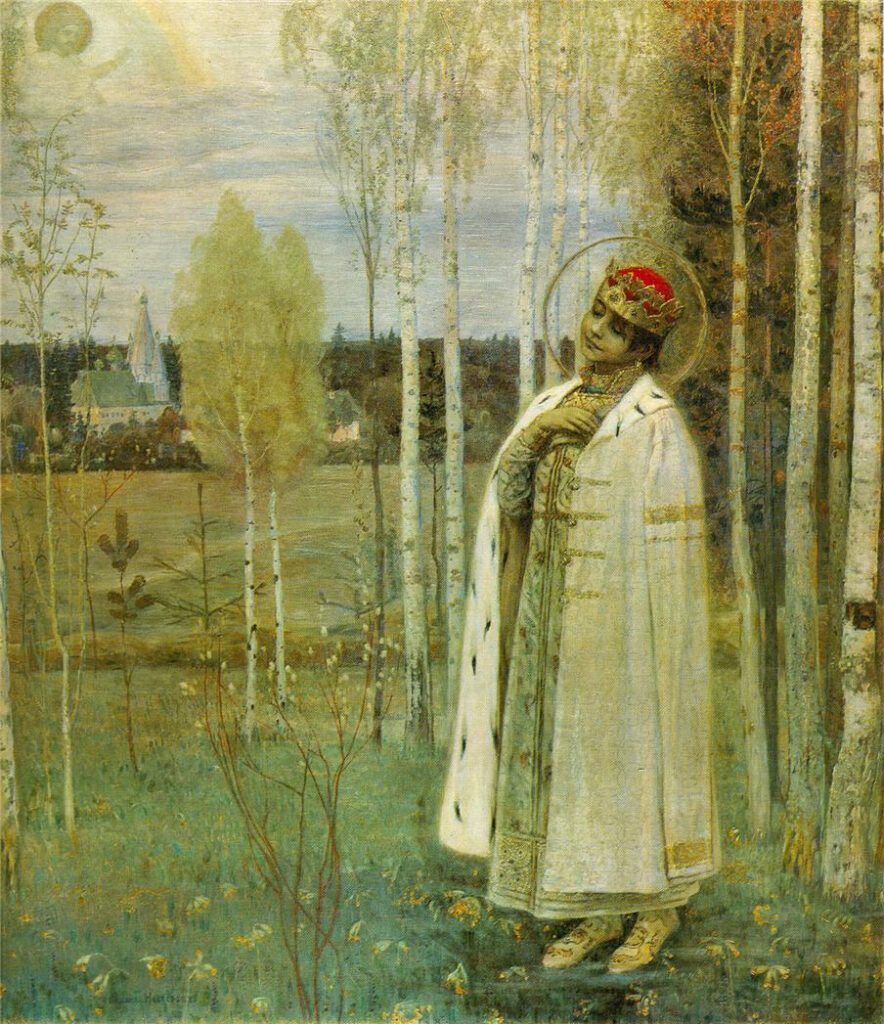
It is difficult to give a definitive answer to this question. Tsarevich Dmitry Ivanovich, the youngest son of Ivan the Terrible and the last representative of the male line of the Moscow branch of the Rurik dynasty, died in Uglich on May 15, 1591, at the age of 8. Among the people, the version that he was murdered became immediately popular, and the crime was supposedly organized by the Tsar’s favorite, Boyar Boris Godunov, who was counting on taking the throne after the death of Tsar Fyodor Ivanovich, the elder half-brother of the young prince. At the same time, rumors began to spread that the Tsarevich had actually survived and gone into hiding.
The Boyar Duma, which included Godunov, ordered an official investigation by sending a commission to Uglich, led by Boyar Vasily Ivanovich Shuisky. After interrogating dozens of witnesses, the commission concluded that Tsarevich Dmitry had died accidentally, having fallen onto a knife during a game with his peers (a game similar to the modern knife game or “swiping,” as described in 19th-century ethnographic literature).
The commission also determined that rumors of his murder by Godunov’s agents—and the resulting unrest among the townspeople, who tore apart three of Godunov’s associates suspected of the murder—were provoked by the boyar’s ill-wishers. The investigation file from 1591 is kept in the Russian State Archive of Ancient Acts and is the oldest document of its kind in Russia to have survived to this day.
Nevertheless, the seemingly legally sound conclusions of the investigative commission convinced few. Many continued to consider Boris Godunov a murderer; others believed in the miraculous escape of the Tsarevich. The first circumstance greatly damaged Godunov’s reputation, forever tainting him with suspicion of regicide, while the second led to the appearance of several impostors claiming to be “Tsarevich Dmitry” during the Time of Troubles.
So, Was Boris Godunov a Villain, or Is He Being Demonized?

If he was a villain, the evidence from his reign does not confirm it. After Tsar Fyodor Ivanovich died in 1598 and the Rurik dynasty ended, Godunov was elected Russian Tsar at the Zemsky Sobor, and he ruled until his death in 1605.
Compared to the despotic Ivan the Terrible and the helpless reign of his son Fyodor, Godunov seemed to his contemporaries like an effective statesman, successfully handling both foreign and domestic policies. Modern historians also describe him as an extraordinary figure who did much to overcome the consequences of the Oprichnina and Russia’s international isolation under Ivan the Terrible.
However, in almost all writings from the Time of Troubles, Godunov is evaluated extremely negatively, and this is due to reasons beyond his control.
The 1598 election was an unprecedented event in Russian history, and the legitimacy of this procedure, about which we know little, was highly questionable to contemporaries: everyone was used to the idea that one could be born a tsar but not elected one. The third tsarist election, in 1613, which made Mikhail Fyodorovich Romanov the tsar, notably did not cause such doubts—the procedure had become accepted. Additionally, Godunov’s reputation was affected by persistent rumors of his involvement in the murder of Tsarevich Dmitry.
Moreover, during Boris Fyodorovich’s reign, a series of natural disasters caused crop failures in Russia, followed by mass famine, epidemics, increased vagrancy, crime, and other calamities. Contemporaries saw these Troubles as divine punishment for the sins of the Russian people, focusing primarily on the sins of the ruler—seemingly imagined ones. This perception firmly established Boris Godunov’s reputation as a villain.
Who Were the False Dmitrys, How Many Were There, and Why Did People Believe in Them?
There were three known individuals who claimed to be the deceased Tsarevich Dmitry Ivanovich: a greater concentration of impostors than in any other period in Russian history. The first was Grigory Otrepyev, a runaway monk from the Chudov Monastery in the Moscow Kremlin (hence, in Russian texts from the Time of Troubles, he was called Rasstriga, meaning “deprived of holy orders”). In 1604, an official investigation initiated by Boris Godunov identified his identity.
In 1603, he fled to the Polish-Lithuanian Commonwealth, where he presented himself as the miraculously saved Tsarevich Dmitry. A year later, he set out for Moscow with armed supporters to claim the “father’s throne” and unexpectedly received support and recognition from almost all segments of society.
Garrisons in most border fortresses surrendered without a fight, and the army, upon learning of Godunov’s death, swore allegiance to “Tsarevich Dmitry” instead of Boris’s heir, Fyodor Godunov. In 1605, False Dmitry I was crowned in the Dormition Cathedral of the Kremlin, but he died a year later during a city uprising. In May 1606, the townspeople and the army killed part of the Poles who had come to the impostor’s wedding with Marina Mnishek and killed False Dmitry himself. Contemporaries attributed the “people’s wrath” to the inappropriate behavior of the “Poles” who did not respect Russian traditions. A Zemsky Sobor hastily convened in June elected the boyar Vasily Shuisky as the new tsar.
There is no reliable information about the true identity of the second impostor “Tsarevich” or his real name; we only know that he claimed to be the saved False Dmitry I. Russian contemporaries called False Dmitry II the Tushino thief: in 1608–1609, his supporters’ camp—those who had supported the previous impostor, along with Polish mercenary detachments—was located in the village of Tushino near Moscow. At the end of 1609, losing the trust of most “Tushinites,” he fled to Kaluga, where he was killed in early 1610.
The last False Dmitry was called either Sidorka or Matyushka. He appeared in 1610 in the Pskov region, hence his nickname Pskov thief, claiming to be the saved False Dmitry II and attracting his supporters to his side. In 1612, he was arrested by the people of Pskov. The further fate of False Dmitry III is unknown: either he was executed in Moscow, or he was killed on the way to the capital.
The success of these impostors was due to distrust of the central authority and its official information, a result of a deep socio-political crisis in Russian society.
Who Was Marina Mnishek? Was She Truly a “Gray Cardinal” Behind the False Dmitrys?
A “gray cardinal” is usually considered a behind-the-scenes yet powerful political player. It is doubtful that Marina Mnishek was such a player, although she certainly played a role in the events of the Time of Troubles. In 1603, Marina Mnishek, the daughter of Polish magnate Yuri (Jerzy) Mnishek, met Grigory Otrepyev at her father’s castle in Sambor, where the impostor was hiding. In 1606, after False Dmitry’s enthronement in Moscow, they married, but a week after the wedding, Grigory was killed.
The new tsar, Vasily Shuisky, sent Marina back to her homeland, but somehow, finding herself in the camp of the Tushino thief False Dmitry II, Mnishek publicly recognized him as her husband and even bore him a son. When False Dmitry II was killed in 1610 and the Tushino camp disbanded, Mnishek fled to southern Russia with a band of Cossacks, but in the summer of 1614, the army of the newly elected Tsar Mikhail Fyodorovich Romanov captured her near Astrakhan. She died in captivity in Kolomna in 1614.
When assessing Marina Mnishek’s political influence, it is important to remember that we do not always know how independent her actions were. Her marriage to False Dmitry I could not have been concluded at her will—it required the sanction of her father and the Polish king. It is unclear how Marina Mnishek ended up in the entourage of False Dmitry II: it could have been a voluntary step or a direct abduction by the Tushino thief, who needed to confirm his legitimacy. It is also unknown whether she wanted to flee south or if this was the decision of the Cossacks surrounding her.
What Was the Involvement of the Poles in the Time of Troubles, and How Did They End Up in Russia?
Historians of the Early Modern and Modern periods refer to the subjects of King Sigismund III Vasa of the Polish-Lithuanian Commonwealth as “Poles.” Among them were ethnic Polish Catholics, as well as Orthodox Lithuanians (szlachta) and Cherkasy (Cossacks).
The Polish intervention was preceded by constant conflicts between Russia and its western neighbor, the Polish-Lithuanian Commonwealth, over border territories (particularly Smolensk). While Russia was an absolute monarchy, in the Polish-Lithuanian Commonwealth, royal power was significantly limited by the aristocracy, or magnateria, as it was called in Old Polish, as well as by the Sejm, the representative body of the nobility with broad powers.
Sigismund III sympathized with False Dmitry I, but the pretender did not actually receive support from him for his campaign against Moscow in 1604–1605, as the Sejm opposed it. False Dmitry I took the throne due to the crisis in Russia, not with the help of the Polish-Lithuanian Commonwealth.
After the death of the first pretender, a civil war began (1606–1610) with two centers of power: in Moscow, led by Tsar Vasily Shuisky, and in Tushino, where False Dmitry II was located with his supporters. Among them were units of the Polish nobility under the command of hetmans, who came to Tushino as mercenaries. Unable to deal with the “Tushino people” on his own, Tsar Vasily Shuisky entered into an agreement with Sweden, which also had tense relations with the Polish-Lithuanian Commonwealth, and in 1609 invited a detachment of Swedish mercenaries. Sigismund and the Sejm regarded this agreement as anti-Polish, which became the pretext for the Polish-Lithuanian army’s attack on Russia and the siege of Smolensk.
In the summer of 1610, the Moscow boyars deposed Tsar Vasily Shuisky and sent a delegation to Sigismund near Smolensk to invite his son, Prince Władysław, to the Moscow throne. After two unsuccessful attempts (Godunov and Shuisky), the boyars agreed not to elect a tsar from “among their own.” At this point, the Polish units near Moscow received the status of the army of the future Russian tsar, and one of them ended up in Moscow.
However, negotiations with Sigismund reached an impasse: the king likely decided to claim the Russian throne himself, and the negotiations were essentially going nowhere. In 1611, a liberation army, known as the Second Militia, was formed in Nizhny Novgorod, led by Prince Dmitry Pozharsky and zemstvo elder Kuzma Minin. The Second Militia marched to liberate Moscow, and on November 2, 1612, the Polish garrison surrendered. However, the intervention did not end there. In 1618, the Poles launched another campaign against Moscow, still hoping to place Prince Władysław on the throne, but they were defeated. The Polish intervention ended with a truce, which was concluded shortly thereafter in the village of Deulino.
Did Minin and Pozharsky Really Do Something Important?
The sources leave no doubt that they played a crucial role in liberating Russia from the Polish intervention and ending the Time of Troubles. Of course, the military victories and the restoration of order in the state were not solely their achievements.
There was no legitimate ruler in the country; it was devastated, and Polish intervention continued on its territory. In these circumstances, the idea of forming an army to end the Time of Troubles, liberate Moscow, and convene a Zemsky Sobor (Assembly of the Land) to elect a new tsar arose in Nizhny Novgorod in 1611. Under the leadership of Kuzma Minin, the zemstvo elder, who, according to some sources, was also a meat merchant, the people of Nizhny Novgorod raised funds to maintain military units and sent letters across the country calling for people to join their cause.
Prince Dmitry Pozharsky, an aristocrat and courtier who had served in command positions in the army, was recovering from wounds received in battles with the Poles in his village near Nizhny Novgorod at this time. A delegation from Nizhny Novgorod approached him with a request to take command of the militia and lead it to Moscow, and, as is well known, the plan succeeded.
Who Was Ivan Susanin, and Is It True That He Gave His Life for the Tsar?
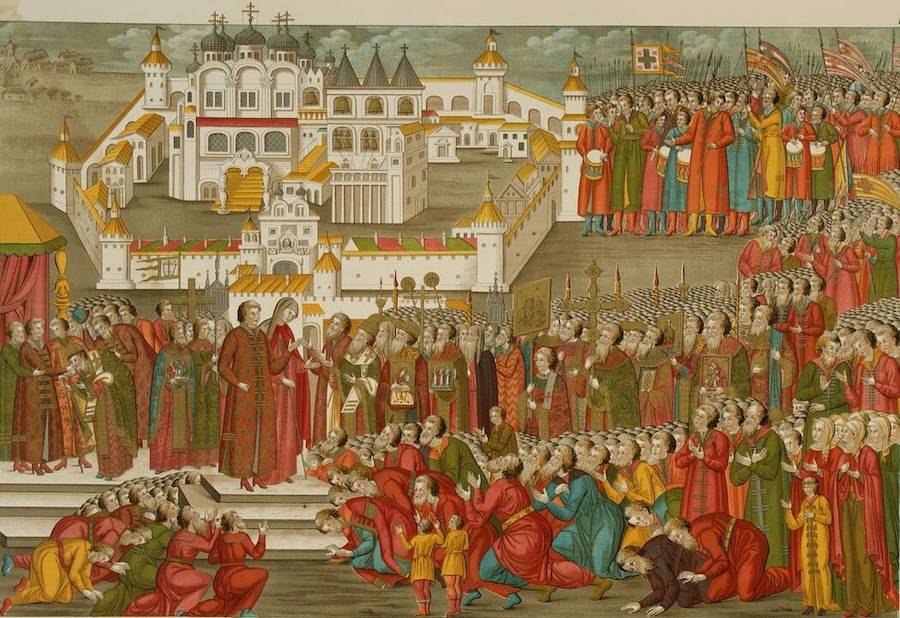
There is little information about the real Ivan Susanin, but it does exist. According to it, Susanin was a serf peasant, possibly the village elder of Domnino, located 60 kilometers from Kostroma, who was widowed by 1613 and had a son-in-law, daughter, and grandchildren (who were the recipients of the first royal charter). Knowing that Tsar Mikhail Romanov was in Kostroma, Susanin, subjected to terrible torture, refused to show the way to the city and was killed for it.
Ivan Susanin’s feat in the 18th–19th centuries in the Russian Empire was elevated to an official patriotic cult and acquired many unreliable details (which, however, does not negate the fact of his deed). For example, these events are presented quite differently in Mikhail Glinka’s opera “A Life for the Tsar,” renamed “Ivan Susanin” during Soviet times. In it, in the winter of 1613, a Polish detachment heads to Kostroma to kill Mikhail Romanov, elected by the Zemsky Sobor as tsar. The Poles take the local peasant Ivan Susanin as their guide, who leads the “Lyakhs” into the forest thicket and at the cost of his life saves the young tsar from death. No documents confirming this version of events exist.
How Did the Time of Troubles End?
It is difficult to pinpoint the end of the Time of Troubles to a single date or year. Several key events marked the end of the Troubles. Perhaps the most important of these was the unanimous election of a new tsar, Mikhail Fyodorovich Romanov, by the Zemsky Sobor in Moscow and his coronation with the Monomakh’s Cap in the summer of 1613 in the Assumption Cathedral of the Kremlin.
This established a new ruling dynasty in Russia, accepted by the vast majority of subjects, and ended the civil war.
The end of foreign intervention—military actions on Russian territory continued even after the new tsar’s election—came in 1619 with two peace agreements: the aforementioned Deulino Truce with the Polish-Lithuanian Commonwealth and the Treaty of Stolbovo with the Swedish Kingdom.
However, despite Mikhail Fyodorovich being elected tsar, Sigismund III refused to recognize the decisions of the Zemsky Sobor as legitimate: he held a document from the Boyar Duma, issued three years earlier in 1610, offering the throne to his son, Prince Władysław. The matter was finally settled in 1634 during negotiations in Polyanovka, when Władysław, who by then had become King Władysław IV Vasa, received a compensation of 20,000 rubles in silver from Moscow and officially renounced his claims to the Moscow throne.


